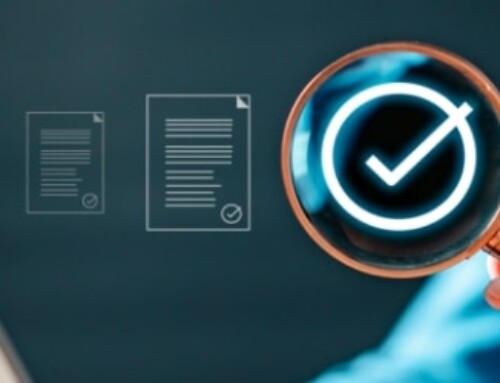Every year, the looming threat of cyberattacks becomes more and more prevalent. In 2023, data breaches reached new heights, costing businesses an average of $4.45 million per incident. Major organizations encountered a wide range of cyberthreats, from simple phishing scams designed to steal troves of sensitive information to sophisticated ransomware attacks capable of causing widespread disruption.
Unfortunately, 2024 will likely bring a whole new set of cybersecurity challenges for businesses. As technology continues to advance and hackers become more adept at exploiting vulnerabilities, it’s crucial for businesses to stay on top of the latest cybersecurity solutions to protect their most valuable assets.
What are the biggest cyberthreats businesses will face in 2024?
Cyberthreats come in all shapes and sizes, and businesses will probably encounter a variety of attacks in 2024. One of the most concerning threats is the potential implications of artificial intelligence (AI) in cyberattacks.
For instance, cybercriminals could use AI to develop malware that can analyze vulnerabilities in a network, change its code, and evade traditional security measures in real time. Generative AI could also be used to create persuasive phishing emails that are virtually indistinguishable from legitimate ones, making it harder for employees to identify and avoid them. Another more complex AI-based threat is the creation of deepfakes, which are realistic fake videos or audio recordings used to manipulate and deceive people. With the potential to impersonate high-level executives or access sensitive information, deepfakes can escalate the danger of social engineering attacks against businesses.
Cybercrime-as-a-Service (CaaS) is another major concern for businesses. CaaS refers to a business model where cybercrime tools and services, such as malware creation, ransomware kits, and hacking tutorials, are offered for an affordable subscription fee. This allows even novice criminals to launch sophisticated attacks without having the technical expertise required.
Beyond external threats, businesses will also have to be vigilant against the threats coming from within. Human error, such as setting weak passwords or falling for social engineering tactics, remains a key vulnerability for organizations. Plus, with hybrid work arrangements becoming the norm, an increasing number of employees are using personal devices for work. However, introducing more devices into a company’s network increases the possibility of potential security breaches, especially if these devices are not properly secured. If a personal device is compromised, it can serve as an entry point for hackers.
How can businesses protect themselves in 2024?
Considering the many types of cyberthreats businesses may face in 2024, it’s essential to implement a multilayered security framework that comprises six key solutions.
Next-generation firewalls
Unlike traditional firewalls, which only monitor incoming and outgoing traffic based on predefined rules, next-generation firewalls use advanced techniques such as:
- Deep packet inspection to analyze network traffic at a granular level and block malicious activity
- Intrusion prevention systems to detect and prevent suspicious network activity (e.g., large file transfers, port scanning, and brute force attacks)
- Application control to determine which types of applications can access the company network
- URL filtering to selectively block access to malicious websites or unsuitable content
Next-gen firewalls can be deployed as hardware or virtual appliances and offer a more comprehensive defense against modern network security threats.
Email security
The most popular cyberattacks such as phishing, spear phishing, and business email compromise (BEC) often start with an email. It’s therefore critical for businesses to have an email security solution to filter out malicious emails and prevent them from reaching employees’ inboxes.
Top-notch email security solutions should have features such as spam filters, email encryption, malware protection, and phishing URL detection. Advanced solutions also feature sandboxing, which isolates suspicious email attachments in a secure environment to detect and block any malicious behavior.
Another important feature to look for in an email security solution is data loss prevention. a system that identifies and prevents the loss of sensitive data such as credit card details and private medical records. This works by scanning outbound emails and attachments for specific data patterns to ensure that confidential information never leaves the company’s network without proper authorization. If data is authorized to be shared externally, data loss prevention ensures that it’s well encrypted and secure to prevent data leaks.
Anti-malware and endpoint protection
Malware such as Trojan viruses, ransomware, and spyware remain a major threat to businesses in 2024, so it’s crucial to have anti-malware and endpoint protection software on all devices connected to the network. These solutions offer continuous monitoring for malware infections, block malicious files from executing, and regularly scan endpoints for any signs of suspicious activity. To stay effective against modern threats, businesses may want to invest in more advanced anti-malware solutions that use machine learning and behavioral analysis to detect and block new, unknown threats.
Meanwhile, endpoint protection software goes beyond the capabilities of traditional antivirus software, providing additional features such as application whitelisting and device management. Application whitelisting ensures that only authorized applications can run on a device, preventing malicious programs from being installed. Device management allows administrators to monitor and manage devices remotely as well as distribute software updates and patches across all company-owned devices. System administrators can even wipe a device remotely if it’s lost or stolen to prevent any data breaches.
Identity and access management
Securing network perimeters is often not enough to protect modern organizations because as soon as employees leave the office or work remotely, they become vulnerable to cyberattacks. Identity and access management (IAM) solutions protect businesses by ensuring that only authorized users have access to company resources.
IAM solutions include:
- Multifactor authentication, a security method that requires users to provide additional forms of verification like biometric data or one-time access codes sent to a mobile app
- Single sign-on to enable employees to access all the applications they are permitted to use with just one set of login credentials
- Role-based access control to restrict user privileges according to their role in the organization
- Conditional access policies to enable or restrict access depending on factors such as location, IP address, and the security of the device being used
Cloud backup
If the worst happens and an organization falls victim to a cyberattack or data breach, having reliable backups can be the difference between a quick recovery or severe financial losses. Cloud backup solutions are the ideal choice for businesses in 2024 because they provide secure, remote storage of critical data that can be easily accessed from any location with an internet connection.
Cloud backup providers store data in multiple, geographically dispersed data centers to ensure redundancy and protect against natural disasters. These providers also use advanced encryption and security measures in place to keep data safe from cyberthreats. What’s more, cloud backups automatically save and replicate data in real time, so businesses can recover their systems and data to a recent state without experiencing any significant downtime.
Security awareness training
As important as it is to have the latest security tools in place, they’re often no match against the leading cause of data breaches: human error. That’s why businesses should invest in security awareness training for their employees, to educate them on the latest cyberthreats and best practices for staying safe online.
Security training should cover topics such as how to detect phishing emails, recognizing AI-based fraud such as deepfakes, creating strong passwords, and reporting suspicious activities on the network. It should also be done regularly and include simulated fraud attempts to put your employees’ knowledge and skills to the test.
Protecting your business from cyberthreats in 2024 will undoubtedly be a challenging task, and you will need all the help you can get. Dynamic Solutions Group is a managed IT services provider that specializes in cybersecurity and can help your business stay one step ahead of cybercriminals. Contact us today to find out how we can protect your business in 2024 and beyond.






